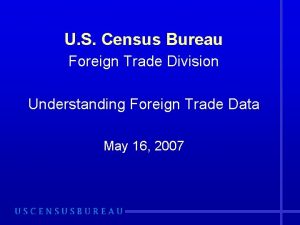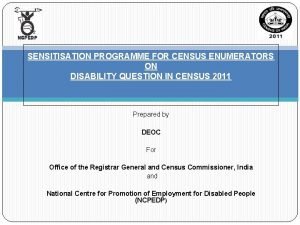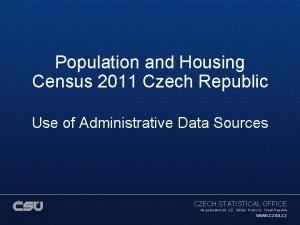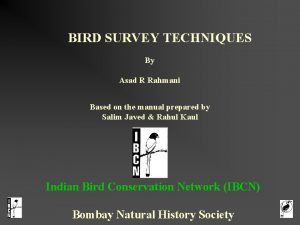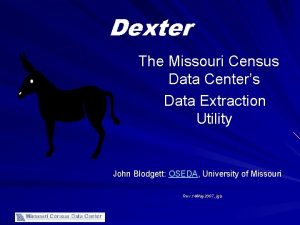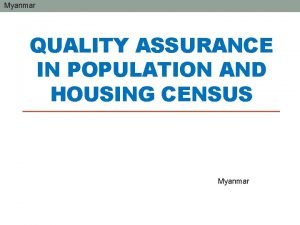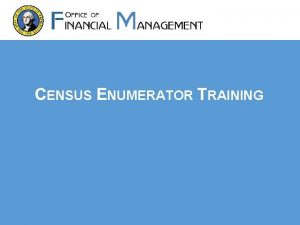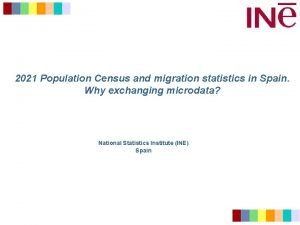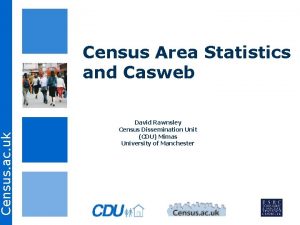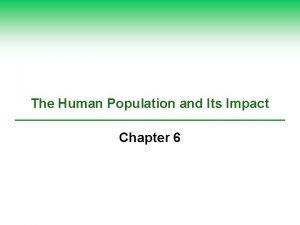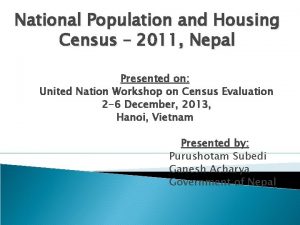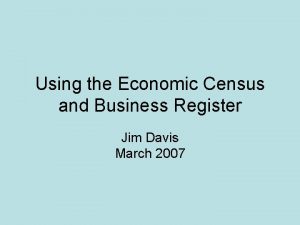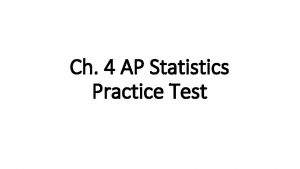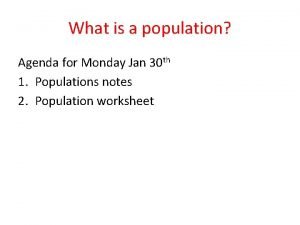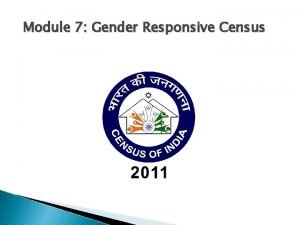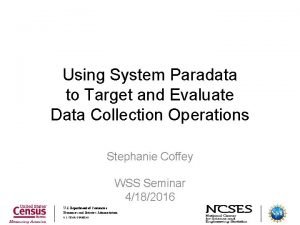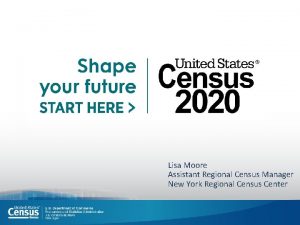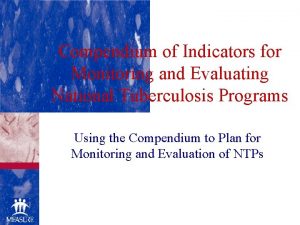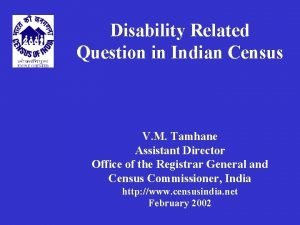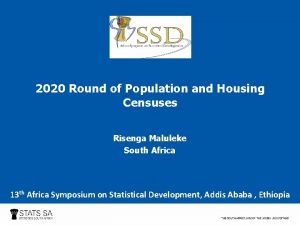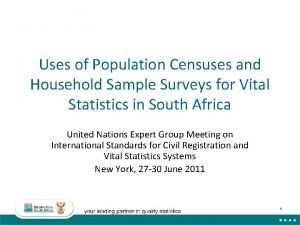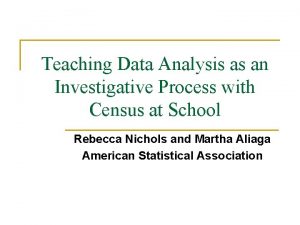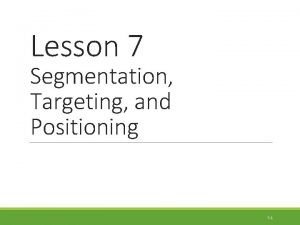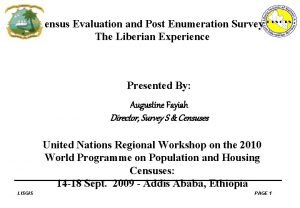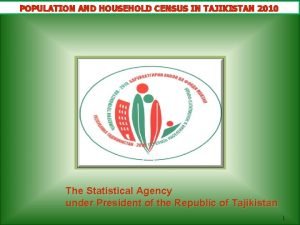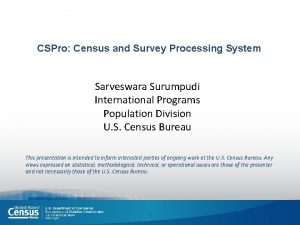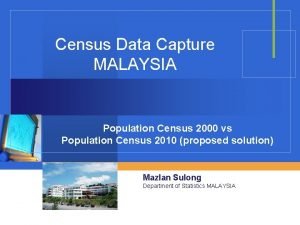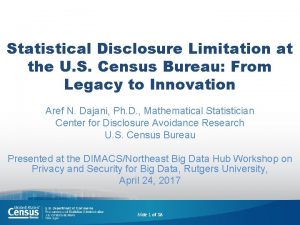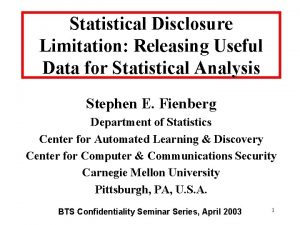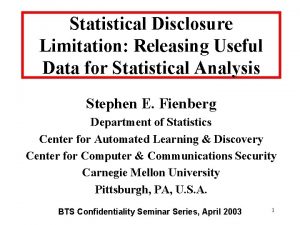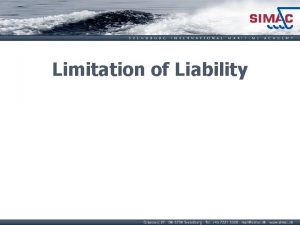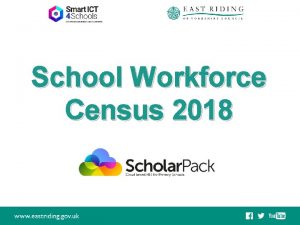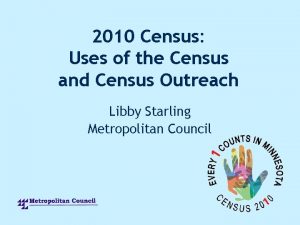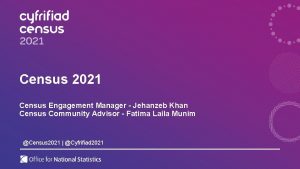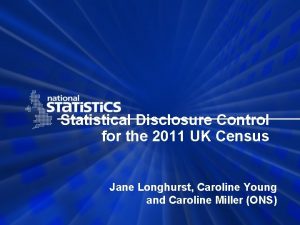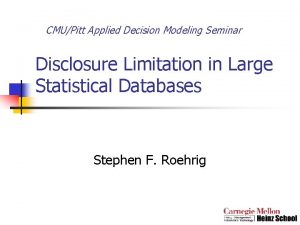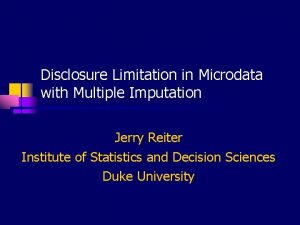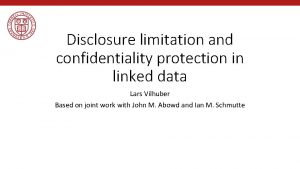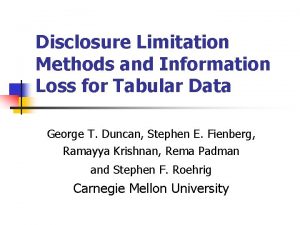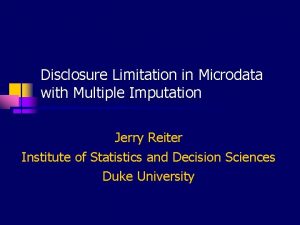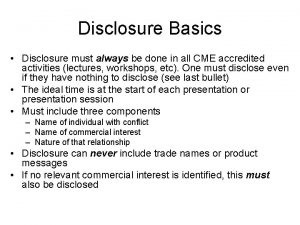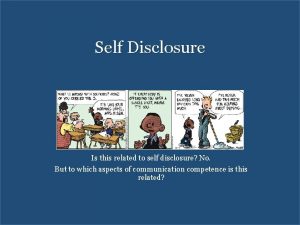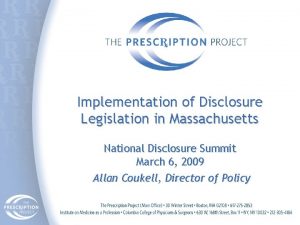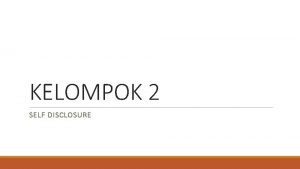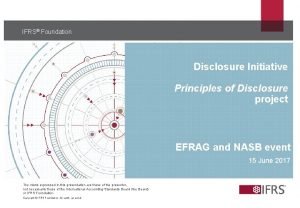Statistical Disclosure Limitation at the U S Census



































- Slides: 35

Statistical Disclosure Limitation at the U. S. Census Bureau: From Legacy to Innovation Aref N. Dajani, Ph. D. , Mathematical Statistician Center for Disclosure Avoidance Research U. S. Census Bureau Presented at the DIMACS/Northeast Big Data Hub Workshop on Privacy and Security for Big Data, Rutgers University, April 24, 2017 Slide 1 of 38

Disclaimer This presentation is released to inform interested parties of ongoing research and to encourage discussion of work in progress. Any views expressed on statistical, methodological, technical, or operational issues are those of the author and not necessarily those of the U. S. Census Bureau. Slide 2 of 38

Acknowledgements § My colleagues within CDAR who reviewed this presentation, in particular our Center Chief Simson Garfinkel. § Associate Director for Research and Methodology and Chief Scientist John Abowd. Slide 3 of 38

Roadmap of Presentation § Personally Identifiable Information (PII) and Statistical Disclosure Limitation (SDL) § The Census Bureau and Privacy § Legacy Methods of SDL at the U. S. Census Bureau § Ongoing Improvements on Legacy Methods § Innovation in SDL at the U. S. Census Bureau § Challenges, Opportunities, and Final Remarks Slide 4 of 38

Definition of PII § OMB Memorandum M-17 -12, January 3, 2017 § “The term PII refers to information that can be used to distinguish or trace an individual’s identity, either alone or when combined with other information that is linked or linkable to a specific individual. ” Slide 5 of 38

Privacy Protection Terminology § Statistical Disclosure Limitation (SDL) and Disclosure Avoidance (DA) § Statistical methods used in the processing of data prior to releasing data products to ensure the confidentiality of responses § De-Identification: Process which removes identifiers Slide 6 of 38

Re-Identification § A method to avoid uncovering PII through record linkage § Legacy re-identification studies determine whether we can link specific auxiliary files to our public use files § These include, for example, GIS shape files and webscraped files. § We then use our internal use data to calculate what proportion of suspected links are confirmed. Slide 7 of 38

The Database Reconstruction Theorem § Slide 8 of 38

Title 13: Census Bureau’s Privacy Law § The Census Bureau collects data from households and establishments and produces statistical results. § From U. S. Code Title 13, Section 9, the following are prohibited: 1. use the information furnished under the provisions of this title for any purpose other than the statistical purposes for which it is supplied; or 2. make any publication whereby the data furnished by any particular establishment or individual under this title can be identified; or 3. permit anyone other than the sworn officers and employees of the Department or bureau or agency thereof to examine the individual reports. https: //www. law. cornell. edu/uscode/text/13/9 Slide 9 of 38

The Census Bureau and Privacy § We release reports, tables/infographs, and publicuse files. § To satisfy the statutory requirements noted in the previous slide, the Census Bureau applies disclosure avoidance procedures to all of its public products § We are currently moving from legacy to innovative new SDL techniques Slide 10 of 38

Legacy Methods of SDL at the U. S. Census Bureau § Information reduction § Data perturbation § Federal Statistical Research Data Centers (FSRDC) Slide 11 of 38

Information Reduction Methods at the U. S. Census Bureau § § § Top-/bottom-coding Cell or item suppression Removing variables from tables or files Rounding Sampling Slide 12 of 38

Data Perturbation Methods at the U. S. Census Bureau § Swapping § Random noise infusion § Partially and fully synthetic database construction § Modeled noise infusion § Survey of Income and Program Participation linked to IRS and SSA data § Offers validation server; results from runs on the confidential data are subjected to traditional SDL § Synthetic Longitudinal Business Database § Also offers validation server; results from runs on the confidential data are subjected to traditional SDL § Validation servers can only be accessed by internal Census staff, not external researchers Slide 13 of 38

FSRDC Overview § Partnerships between federal statistical agencies and research institutions § Access to restricted-use microdata for statistical purposes § 24 locations and counting (25 th, at Georgetown, opens tomorrow) § Research proposals and output are reviewed for conformance to disclosure avoidance standards. Slide 14 of 38

Options for Research on Confidential Data – Remote Stats Researchers who want access to the data Organization with confidential data 1. Researcher goes to organization, conducts research, results are processed with traditional disclosure avoidance methods and returned. Advantage: Statistics are run on the confidential data. Some disclosure limitations (e. g. , swapping) are not removed, even when the confidential data are used Disadvantage: Slow; expensive; privileged researchers. Slide 15 of 38

Options for Research on Confidential Data - Microdata Researchers who want access to the data Organization with confidential data 1. Organization publishes de-identified microdata. Advantage: Researchers can use data at their own offices. Results do not receive further disclosure limitation. Disadvantage: Inferences cannot (usually) be corrected to account for the disclosure limitation methods. (See Abowd and Schmutte, BPEA 2015) De-identified data may still leak sensitive information! Slide 16 of 38

Ongoing Improvements in Legacy Methods § Cell suppression for economic censuses and surveys § Expanded fully and partially synthetic database construction Slide 17 of 38

Innovation in SDL at the U. S. Census Bureau (Slide 1 of 2) § Formal Privacy and Differential Privacy (DP) § Randomized response, a survey technique invented in the 1960 s, was the first DP mechanism implemented by any statistical agency, although that was not a conscious decision, and the technique is difficult to adapt to modern survey collection methods § First production application of a formally private disclosure limitation system by any organization was the Census Bureau’s, On. The. Map, (residential side only), a geographic query response system for studying residence and workplace patterns Slide 18 of 38

Innovation in SDL at the U. S. Census Bureau (Slide 2 of 2) § Slide 19 of 38

§ Budget, or Production Possibilities Frontier, in economics is equivalent to Receiver Operating Characteristics curve for statisticians § Constrains aggregate risk of partial database reconstruction given all published statistics § Worst-case limit to the inferential disclosure of any identity or item § In differential privacy, worst case is over all possible databases with the same schema for all individuals and items Slide 20 of 38

Respecting a Privacy-loss Budget § All released statistics can never permit a database reconstruction more accurate than the budget § Protection into the indefinite future § For differential privacy, guarantee is over all future attackers and any database with the same schema Slide 21 of 38

SDL Is Technology Not Preferences § The price of increasing data accuracy (public “good”) in terms of increased privacy loss (public “bad”) is the slope of the PPF § Statistical Disclosure Limitation: Slope of the Risk-Utility Curve (with privacy-loss on the x-axis and data accuracy on the y-axis) § The slope of the PPF is also called the marginal social cost § Difficult to select an optimal point because that requires a model of preferences between data accuracy and privacy loss, which is outside the scope of the disclosure limitation technology § The optimal choice equates marginal social benefit (MSB, determined by the preference model) with marginal social cost (MSC, determined by the technology) Slide 22 of 38

Data accuracy (relative precision=1. 0 when there is no privacy loss) – public “good” PPF, ROC, or Risk-Utility Curve for SDL via Randomized Response 1, 0 0, 9 Where social scientists act like MSC = MSB 0, 8 0, 7 0, 6 0, 5 0, 4 Where computer scientists act like MSC = MSB 0, 3 0, 2 0, 1 0, 0 0, 5 1, 0 1, 5 2, 0 2, 5 3, 0 3, 5 4, 0 4, 5 Privacy-loss (e from differential privacy) – public “bad” Slide 23 of 38 5, 0 5, 5 6, 0

How to Prove That a Privacy-loss Budget Was Respected § Must quantify the privacy-loss expenditure of each publication § The collection of the algorithms taken altogether must satisfy the privacy-loss budget § This means that the collection of algorithms used must have known composition properties Slide 24 of 38

How to Prove that the Algorithms are Resistant to All Future Attacks § Information environment is changing much faster than before § It may no longer be reasonable to assert that a product is empirically safe given best-practice disclosure limitation prior to its release § Formal privacy models replace empirical assessment with designed protection § Resistance to all future attacks is a property of the design Slide 25 of 38

DP: Properties § § Is robust to background knowledge of the data Sequential and parallel composability Allows for post-processing edits Privacy proven guarantees hold even if external data sources are published or released later Slide 26 of 38

Formally Private Synthetic Microdata Confidential Data Model Generation Model with Privacy Guarantees Synthetic Data Generation Formally Private Synthetic Data § Formally private synthetic microdata § Model has intentional errors introduced (noise) § Quantifying privacy loss can be mathematically established and proven. Slide 27 of 38

DP Implementation § Near Term § 2020 Decennial Census of Population and Housing § American Community Survey (data year TBD) § Long Term (Vision) § All demographic and economic censuses and surveys Slide 28 of 38

Differential Privacy: Concerns § The commonly used, flattened histogram representation of the universe is calculated as the Cartesian product of all potential combinations of responses for all variables § This is often orders of magnitude larger than the total population even when structural zeros are imposed § Policy makers (the Director at the Census Bureau) must have enough information about the privacy-loss/data accuracy tradeoff to make an informed decision about e § In some cases, the amount of noise infusion from differential privacy may limit the suitability for use of the published statistics to more narrowly defined domains than has historically been true Slide 29 of 38

Algorithmic Obstacles in Generating High Quality Synthetic Microdata § § § Integer counts Non-negativity Publicly known counts Structural zeros Small biases versus large aggregations Slide 30 of 38

Technical Issues Moving Forward § Currently, synthetic dataset methods must be created for each confidential dataset § We need generic methods that will work on a broader range of datasets § It may be difficult to find meaningful correlations not represented in the model § The model must anticipate the analysis that will be done. § We need better model-building tools § We also need generic tools for correlating arbitrary models with the ones used to build the synthetic data § Reproducible-science methods will be required to use synthetic data effectively Slide 31 of 38

Complex Survey Challenges § Data are often collected with a complex sample design with considerable missing data and in panels of longitudinal data § Research is ongoing to ensure that weighted, longitudinal analysis using differential private data will continue to produce “good results and good science” of value to our data users Slide 32 of 38

Opportunities § Differentially private and synthetic data may allow for data at finer granularity: § Demographic: at lower geographies § Economic: at more specific industry, sector, and product levels Slide 33 of 38

Final Remarks § This transition from legacy to innovation involves retooling of methods for our career mathematical statisticians. § This transition will help the Census Bureau lead similar innovation across the U. S. Federal Government and beyond. Slide 34 of 38

Thanks! Aref N. Dajani, Ph. D. Center for Disclosure Avoidance Research Aref. N. Dajani@census. gov (301) 763 -1797 Slide 35 of 38
 Foreign trade division us census bureau
Foreign trade division us census bureau Census disability question
Census disability question Czech republic census 2011
Czech republic census 2011 Counter cats census
Counter cats census Bird census techniques pdf
Bird census techniques pdf Dexter data extraction
Dexter data extraction Www.dop.gov.mm http //myanmar.unfpa.org/census
Www.dop.gov.mm http //myanmar.unfpa.org/census Census enumerator training
Census enumerator training Spain census 2021
Spain census 2021 Casweb census
Casweb census Https://www.census.gov/popclock/
Https://www.census.gov/popclock/ Http://www.census.gov/popclock/
Http://www.census.gov/popclock/ National population and housing census 2011
National population and housing census 2011 Census business register
Census business register The census form
The census form Ap stats practice exam multiple choice
Ap stats practice exam multiple choice Edhint
Edhint Http://www.census.gov/popclock/
Http://www.census.gov/popclock/ Gender responsive census
Gender responsive census Respond census gov nscg
Respond census gov nscg Our census our future
Our census our future School workforce census 2017
School workforce census 2017 In those days caesar augustus issued a decree
In those days caesar augustus issued a decree New york regional census center
New york regional census center Census definition
Census definition Census disability question
Census disability question Gif unpacking in census
Gif unpacking in census Sample or census
Sample or census Quantitative variable examples
Quantitative variable examples School workforce census 2019
School workforce census 2019 Chosen lesson 7 segment 1
Chosen lesson 7 segment 1 Liberia census 2008 results
Liberia census 2008 results Census definition
Census definition Our census our future
Our census our future Cspro android
Cspro android Advantages of census
Advantages of census
